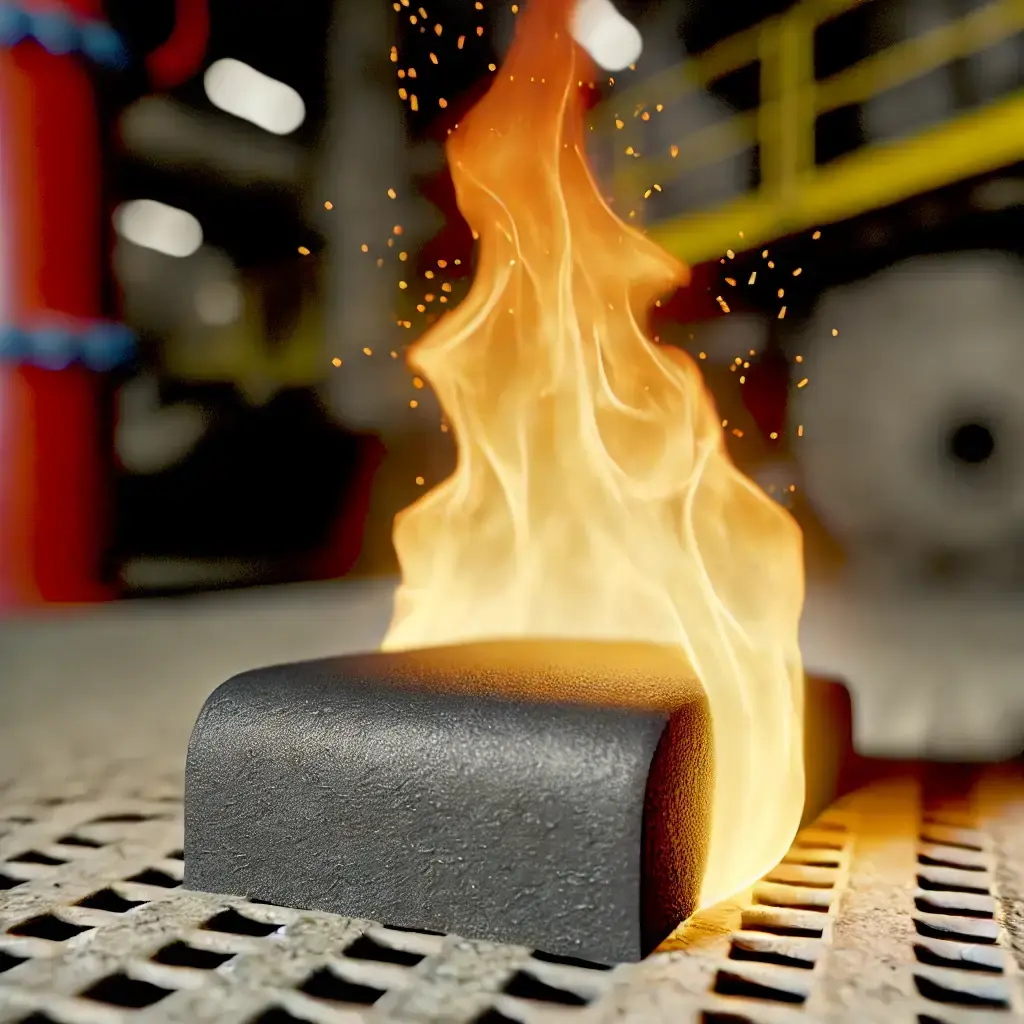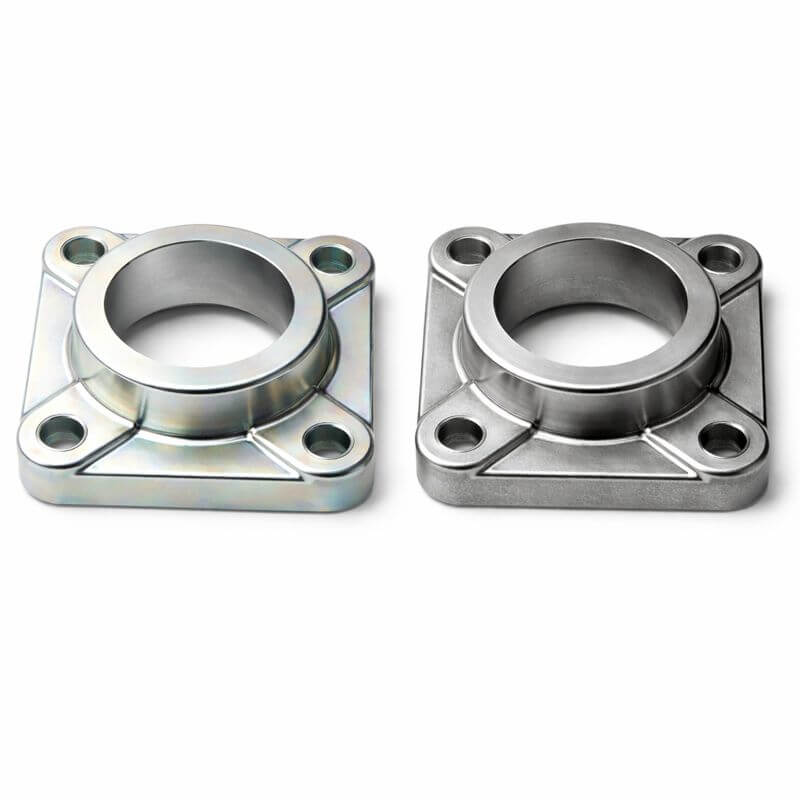2 min read
Young’s Modulus: What It Is, How It’s Calculated and Why It Matters
Young’s modulus, also known as the longitudinal modulus of elasticity, is one of the most important mechanical properties of materials. It is used...

3D printing has revolutionised the way we design and produce components and objects, offering unprecedented flexibility in material selection. This technology allows for the precise production of complex parts, but choosing the right material is essential to ensure that printed components can withstand extreme operational conditions, such as high temperatures. Heat-resistant materials are crucial for applications in challenging environments where the ability to maintain structural integrity and mechanical properties under thermal stress is critical. In this guide, we will explore in detail the heat-resistant materials available from Weerg, focusing on their thermal properties, specific advantages, and typical applications.
PEEK GF is a high-performance material that combines the excellent thermal properties of PEEK with the added mechanical strength provided by glass fibres. This material can withstand temperatures exceeding 300°C, maintaining its dimensional stability and mechanical properties even under prolonged thermal stress. The heat resistance of PEEK GF makes it ideal for applications where high temperatures are a constant factor, such as in engine components or structural parts operating in hot and aggressive environments.
The glass fibres in PEEK GF enhance the material’s rigidity, making it perfect for applications where a combination of thermal resistance and mechanical robustness is required. This material is frequently used in sectors such as the aerospace and automotive industries, where components must endure extreme operating conditions without compromising safety or performance. The ability of PEEK GF to retain its properties at high temperatures makes it an excellent choice for any application where heat resistance is critical.

Classic PEEK is one of the most highly regarded engineering polymers for its extraordinary heat resistance and its ability to maintain excellent mechanical properties at temperatures of around 150°C. This makes it an ideal choice for applications where thermal resistance is of paramount importance. Unlike many other materials, PEEK not only withstands high temperatures but also retains its chemical stability in aggressive environments, resisting attacks from acids, bases, and solvents.

This combination of thermal and chemical resistance makes PEEK suitable for use in harsh industrial environments, such as the petrochemical sector or in medical devices, where frequent sterilisation is required. Additionally, PEEK is self-lubricating, meaning it can operate under high friction conditions without degrading, maintaining high performance even at extreme temperatures. This makes it ideal for components like gears and bearings, which must function reliably in challenging conditions.
 PEEK CF is a carbon fibre-reinforced version of classic PEEK, combining PEEK’s exceptional thermal properties with the lightness and rigidity of carbon fibres. This material can withstand temperatures up to 300°C, offering greater stiffness and mechanical strength compared to non-reinforced PEEK. Thanks to carbon fibre reinforcement, PEEK CF has a reduced thermal expansion coefficient, meaning it undergoes less deformation when exposed to temperature changes, maintaining tight tolerances even under extreme heat.
PEEK CF is a carbon fibre-reinforced version of classic PEEK, combining PEEK’s exceptional thermal properties with the lightness and rigidity of carbon fibres. This material can withstand temperatures up to 300°C, offering greater stiffness and mechanical strength compared to non-reinforced PEEK. Thanks to carbon fibre reinforcement, PEEK CF has a reduced thermal expansion coefficient, meaning it undergoes less deformation when exposed to temperature changes, maintaining tight tolerances even under extreme heat.
The combination of high heat resistance, rigidity, and lightness makes PEEK CF ideal for applications in sectors such as aerospace and automotive, where reducing weight without compromising structural strength is crucial. It is particularly suited for parts that need to withstand heavy loads in thermally variable environments, such as in the structural frames of drones and racing cars.
PPS GF is a glass fibre-reinforced thermoplastic known for its excellent heat resistance up to 220°C and superior chemical resistance. This material is particularly well-suited for applications in environments that combine high temperatures with exposure to aggressive chemicals. PPS GF maintains its structural integrity and mechanical strength even under thermal loads, making it ideal for use in electronic and electrical components, where safety and reliability are critical.
The glass fibres reinforce PPS, enhancing its rigidity and impact resistance, making it perfect for the production of electrical insulators and lightweight structural components. Additionally, its low electrical conductivity and resistance to corrosion make it an excellent choice for industrial applications requiring materials that can withstand both heat and chemical exposure.

Flame retardant resin is specifically designed to offer resistance to fire and high temperatures, making it essential for applications where safety is a priority. This material can withstand high temperatures and prevent the spread of flames, making it ideal for use in sectors such as electronics, aerospace, and automotive, where components must remain safe and functional even in emergency situations.
In addition to its fire resistance, this resin retains good mechanical properties even when exposed to intense heat. This makes it suitable for producing enclosures for electronic devices, structural components for vehicles, and internal parts for aircraft, where preventing fire risks is crucial without compromising the mechanical strength of the parts.
 High-temperature resin is formulated to withstand extreme thermal conditions, maintaining its mechanical and structural properties up to 238°C. This resin is particularly useful for applications requiring the production of functional prototypes or final parts that need to operate in high-temperature environments. Its heat resistance makes it ideal for manufacturing tools, components for thermal testing, and applications where precision is critical under thermal stress.
High-temperature resin is formulated to withstand extreme thermal conditions, maintaining its mechanical and structural properties up to 238°C. This resin is particularly useful for applications requiring the production of functional prototypes or final parts that need to operate in high-temperature environments. Its heat resistance makes it ideal for manufacturing tools, components for thermal testing, and applications where precision is critical under thermal stress.
Additionally, high-temperature resin offers good chemical resistance, making it suitable for environments where solvents, oils, and other aggressive chemicals are present. Its combination of heat and chemical resistance makes it perfect for use in sectors such as the automotive industry and the production of components for thermal testing, where parts must withstand both high temperatures and chemically challenging environments.
Ceramic resin represents a unique material, combining the properties of traditional ceramics with the versatility of 3D printing. This material is designed to withstand extremely high temperatures, offering low thermal expansion and superior wear resistance. It is particularly suitable for applications that require hard, abrasion-resistant components, such as parts for engines, turbines, and precision instruments that need to operate in thermally extreme environments.

Thanks to its ability to resist high temperatures and corrosion, ceramic resin is ideal for applications in chemically aggressive environments and for producing parts that must maintain their structural integrity in extreme heat. This material is used in high-tech industries, where thermal resistance and dimensional precision are critical to the performance of the final product.
Selecting the right material for 3D printing is essential to ensure that components can withstand extreme operational conditions, such as high temperatures and chemically aggressive environments. Each material described in this guide offers a unique combination of thermal properties, making it suitable for specific applications where heat resistance is critical. Whether it’s engine components, structural parts for the aerospace industry, or enclosures for electronic devices, the heat-resistant materials available from Weerg enable the achievement of excellent and durable performance in challenging environments. For further details and to select the material best suited to your specific needs, contact our team of highly specialised technicians.

2 min read
Young’s modulus, also known as the longitudinal modulus of elasticity, is one of the most important mechanical properties of materials. It is used...

3 min read
Galvanisation is one of the most effective and widely used surface treatments for protecting steel and other metals from corrosion, oxidation and...

2 min read
VALOI, a brand of the Finnish company Kameratori Oy and specialised in film-digitalisation systems for the home market, has started a collaboration...